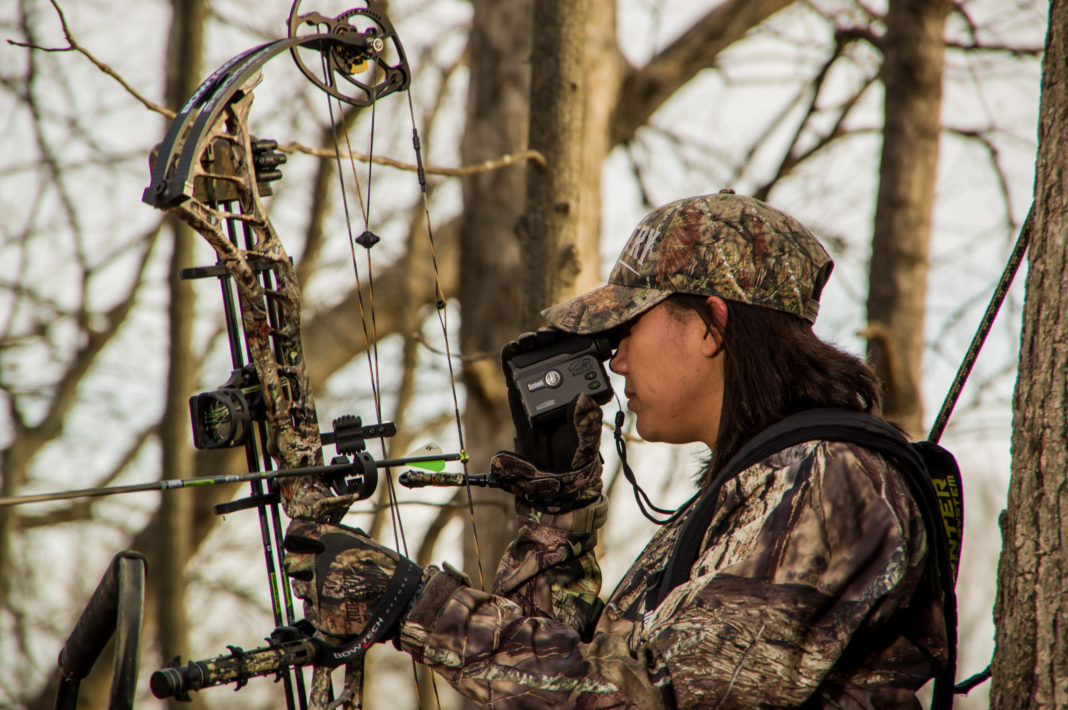Bow season is just around the corner and you need to start getting your bow ready if you have not already done so. What you do now, might mean the difference between a dead deer later, or one that should be dead.
Getting your bow out of the closet a couple of days before season, drawing it back to see if everything feels O.K. is not getting ready. When you go to the woods you need to know your equipment is going to work. However, knowing that your bow is ready should be done before you shoot your first practice arrow.
If you have a bow press inspect the cam and shafts before doing anything else. If you do not a bow press take it to the local pro shop. Plastic bushings and shims wear over time. Check for nicks and worn areas. Replace any damaged parts. Also, check the cam for excess lateral movement when on the axle shaft.
Check for nicks in the cam itself where the string is in contact with the cam. A nicked cam can damage your string which could to personal injury. The nicks can be fixed with a small file or sand paper. Now is also the time to clean out excess wax that has built up in the string grooves. Do not use oil as it will attract and hold grim. Instead use a graphite based lubricant by placing a small amount on the axle before re-assembling the bow.
Now is that the bow is back together, check and see if the cams are in tune. This is where single cam bows are good. It is impossible for a single cam bow to get out of tune. When your bow has two cams, and one is slower than the other you will not be able to shoot tight groups. To check this slowly pull your bow back while someone watches to make sure both cams roll over at the same time. Normally, the lower cam causes the first problems. This is caused from abuse, by lowering the bow to the ground from the stand and dirt getting into the lower cam causing it to lose its tune. Visually inspect for nicks and dirt in the cam.
Now that the limbs and cams are fine, check the riser and attachments. Make sure tall all screws and nuts are tight. If you use a prong-type arrow rest that has protective coating on it to dampen the noise, remove it and use fine sand paper and lightly sand the steel prongs. Clean all moving parts and use a graphite lubricant if needed.
Now check your sight that there are no loose parts that could come off or make noise. Check for broken or missing pins, and cracks. Over the years I have had many fiber optic pins get cracked or even fall off. If this happens now is the time to replace the pins. All you have to do with cable guards is to make sure they are free of dust and dirt. If there are any nicks on the guard, you can sand the rod if you wish.
The string is the next thing to take a look at. The serving is the first part of the string to look at. Look for fraying ends and see if it is coming untied. You do not have to replace the whole string if the server is the only problem. Look for cuts in strands on the main string. Inspect the cables carefully. String stretch on a two-cam bow will cause the bow to come out of tune. It is possible for a pro-shop to add a twist to the string to tighten it up, rather than having to purchase a new string.
Once you have made a complete check of your bow the job of tuning will be easier. If your cams are out of tune you should bottom out both limbs and then turn out the limb bolt in equal amounts. This will give you equal tiller. Bows from the factory are set up the same way. If you had to replace your string or server, you will need to make sure that your arrow is roughly centered with the rest and that the sight pin is lined up over the top of your arrow and that the arrow is at a 90-degree angle to the rest. Now the only thing to do is shoot a few arrows, and make adjustments to the sights if they are off.



















![The Best Deer Camp Chili [VIDEO] Deer Chili Ingredients, Tomatoes, Chili Spices](/wp-content/uploads/2015/10/Deer-Chili-Deer-Camp-Recipe-218x150.jpg)
![How to Call Elk Early in the Season [VIDEO]](/wp-content/uploads/2016/08/byers003-218x150.jpg)




![Idiots Disturb Hunter: How Would You Have Handled It? [VIDEO]](/wp-content/uploads/2015/10/DSC00110-e1474487693878-100x70.jpg)
![Albino Buck Shocked to Shed His Antlers [VIDEO]](/wp-content/uploads/2015/10/AlbinoDeer-100x70.jpg)